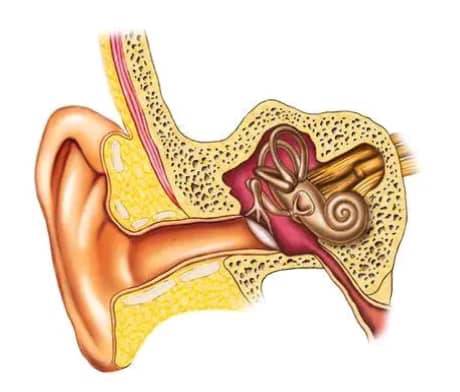A strong and balanced ecosystem is formed by interactions between organisms and between organisms and the biotic components of their environment. Biogeochemical cycles also recycle natural resources so that they are not depleted and thus maintain balance in the ecosystem. Humans try to change the environment (e.g. cutting down trees), to meet their needs. This has disturbed the delicate balance within the ecosystems. Some of the effects of humans on ecosystem balance are described below.
Global Warming
 |
Global Warming |
Acid rain
When the rain passes through polluted air, it encounters chemicals such as sulfur and nitrogen oxides. These chemicals react with water vapor in the presence of sunlight to form sulfuric acid and nitric acid. At high temperatures, these acids remain in vapor form. As the temperature begins to drop, these precipitates condense into liquid and mix with rain or snow falling to the ground. This rain becomes acidic, with a pH ranging from 3 to 3. Occurs between 6.
 |
Acid rain |
Following are some of the bad effects of acid rain.
1. Acid rain destroys the nutrients in the water of rivers and lakes etc. It also lowers the pH of the water and most of the aquatic animals cannot survive at this low pH.
2. Acid rain washes away nutrients from the soil, destroys tree bark and saplings, and damages rootworms. Leaf pigments (chlorophyll) are also damaged.
3. Metal surfaces exposed to acid rain rust easily. Cloth, paper, and leather products lose their material strength and break easily.
4. Acid rain weakens building materials such as limestone, marble, dolomite, mortar and slate, as soluble compounds form in them. Hence, acid rain. It is dangerous for historical buildings. Due to acid rain, the famous Taj Mahal building has dissolved in many places
Deforestation (Deforestation Station)
Deforestation is the loss of forests due to natural or human causes. Large areas of forests have been cleared for agriculture, factories, roads, railways and mining. Humans cut trees to get lumber. A lot of wood is used to make various products or to generate heat. Many of the wild animals that humans hunt are predators of disease-carrying insects. Thus, these insects destroy forests by eating tree trunks and spreading diseases.
The effects of deforestation are floods, droughts, landslides, soil erosion, increased temperature in seasons, and the destruction of many tiger habitats.
Overpopulation
 |
Overpopulation
About 250 years ago, when the industrial revolution began, the world population was 600 million. It seemed that this is a huge population, but now the population of the world is almost 10 times more than that, i.e. 6 billion, and it will increase to 8 billion by 2025. The reasons for this increase in population are better health facilities and a lower death rate.
Urbanization
Expansion of Cities (Urbanization) Urbanization means the growth of cities. People from villages come to cities in search of better employment, educational opportunities and better quality of life. With the rapid increase in cities, it becomes difficult for governments to provide basic facilities such as education, health, security, water, electricity, etc. Most of the people who come to cities do not get good jobs and become part of the urban poor. Schools, hospitals, etc. become overcrowded. Slums increase in cities and there Among the living people The risk of diseases is high. Urbanization is a global problem. It cannot be prevented, but it can be better managed. Pakistan The current level of urbanization is 2 and, by global standards, it is not high.

.jpg)

.jpg)


